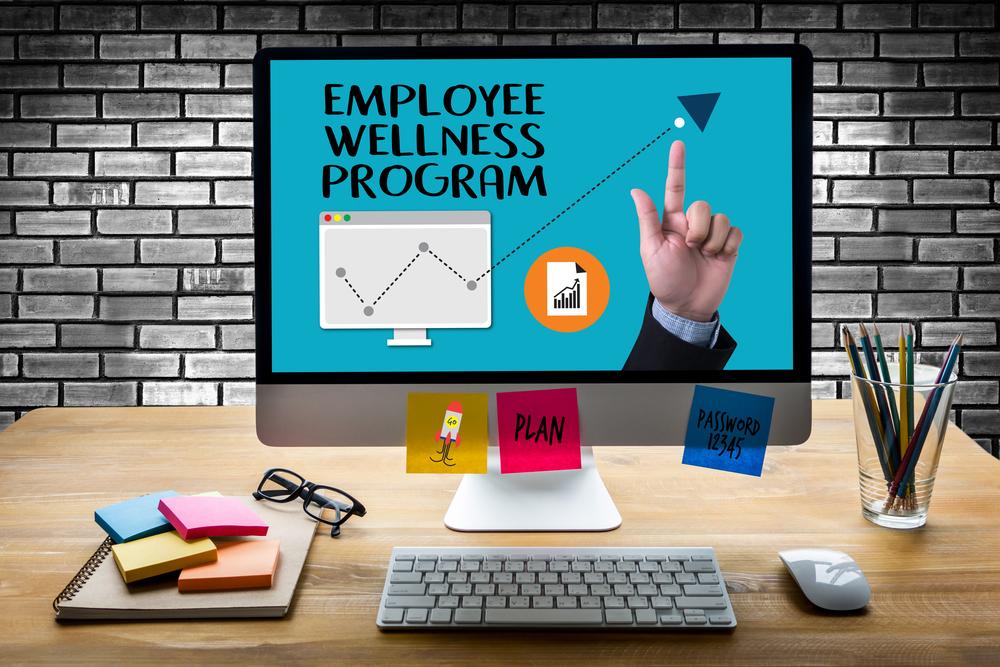
Corporate Health & Wellness Programs in the Workplace and How they Motivate Employees
When Covid arrived, adjusting to the new reality of work wasn’t easy. Businesses had to pivot, with many employees working remotely from home. In 2021, when U.S. employers took the Wellbeing Diagnostic Survey, 86% said they expected stress, mental health, and burnout issues would continue to be important in 2022.
Since physical and mental health are top concerns, employers are more focused on offering employees comprehensive wellness programs. This is especially needed for remote workers who are typically more isolated. Establishing this holistic approach is key for companies to be known as an employer of choice.
How do most wellness programs usually work?
The most valuable resource in any company are the people who work there. Employers want all their employees to be physically and mentally well to achieve the best results. However, remote workers have the added challenge of being physically away from the office which can lead to disengagement.
Having helpful solutions while integrating teamwork (and even friendly competition) can encourage the best choices. Wellness program incentives are usually the nudge employees need to empower themselves for a better life.
What types of wellness programs do companies typically offer?
Wellness programs are designed to support employees to move away from unhealthy habits and embrace new solutions that improve their health, mood and productivity. Some program options that have been shown to motivate employees include:
Physical Health
- Weight Loss – An employee who carries an extra 10 pounds of weight can add 40 pounds of pressure to their knees and other lower body joints according to WebMD. Several companies have weight loss programs that focus on health assessments, nutrition, and meal planning.
- Physical Fitness – The National Institute of Health recommends at least 150 minutes of moderate physical activity per week. Some employers have fitness or walking programs and the ability for employees to track their achievements by logging steps, workouts and other activities such as biking or swimming.
- Smoke Cessation – According to the American Lung Association (ALA), over 480,000 Americans die from cigarettes each year. Many corporations partner with the ALA to provide access to their smoking cessation program which provides specific steps to permanently quit smoking.
Mental Health
- Flexible Schedules – Balancing both work and home schedules gives employees the ability to manage their time without stress or guilt. More employers are offering flexible schedules such as flex time, hybrid and compressed work weeks to give employees options for balancing their busy lives.
- Stress Management – According to the American Psychological Association, 63% of adults surveyed in their Stress in America poll said their lives have been changed forever by the pandemic. Many employers offer stress management techniques that educate employees about relaxation and can offer access to massage and acupuncture therapy as well.
- Personal Relationships – Employee assistance programs are often made available for scheduling a meeting with a local mental health counselor for either a telehealth or in-person appointment. These confidential therapy sessions are used to discuss issues such as personal relationships or topics related to substance abuse, grief and depression.
Additional Programs
- Financial Planning – These online programs educate employees about various financial issues such as buying a home, debt management or retirement. Often access to a financial advisor, along with additional materials is also available to help motivate employees reach their financial goals.
- Social Activities – Various social activities for both in-person and remote workers who get together for outings such skiing, biking or bowling. Other opportunities to socialize online over lunch or to play trivia games are also scheduled as a way to encourage more fun and engagement beyond work discussions.
How can in-person and remote workers collaborate?
Just because a work-from-home employee isn’t physically in the office doesn’t mean they can’t join in on the fun for getting healthy. This usually starts with managers effectively communicating the new programs in detail through emails and video conferencing allowing the work-from-home employee the same access and encouragement. Additional ways they often encourage remote workers to participate include:
Tracking Results
Since most programs are offered online, usually work-at-home participants can sign up and participate equally while watching the progress of their co-workers. This group tracking system that everyone can use, usually encourages a friendly competition that benefits everyone.
Buddy System
With the advantage of teleconferencing, even though remote workers can’t meet in-person, they can still have the advantage of working with an accountability buddy online. Teaming remote workers with an in-person buddy can help both people meet their health goals by scheduling regular check-ins to offer support.
Fun Incentives
Winning a prize of either a gift card or weekend trip that’s in addition to getting healthy is a great added incentive for feeling better. Doing a survey of all the employees to find out what types of prizes would motivate everyone often gets people excited about participating in the programs.
What are the benefits of wellness programs?
Not only do these wellness programs encourage healthier lifestyles, it often saves time and money for companies, including:
- According to a 2019 University of Oxford’s Saïd Business School study, found that employees that were happier were 13% more productive.
- The American Lung Association (ALA) cites that every employee who quits smoking can save employers close to $6,000 per year
- According to a Journal of Occupational and Environmental Medicine who studied companies with wellness programs saw stocks appreciate by 325% over 14-year period
By keeping all employees happy, healthy and productive, employers will ensure the entire team (including remote workers) are functioning at their optimal level to achieve successful outcomes for themselves and the company.
Tags: #corporatewellness, #employeebenefits, #employeemotivation, #employeewellness, #workplacewellness